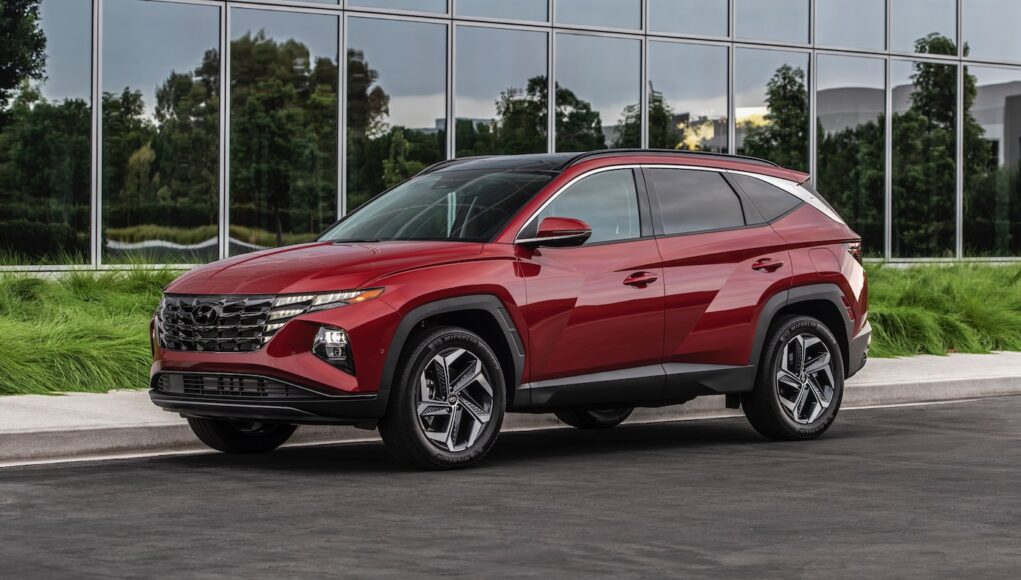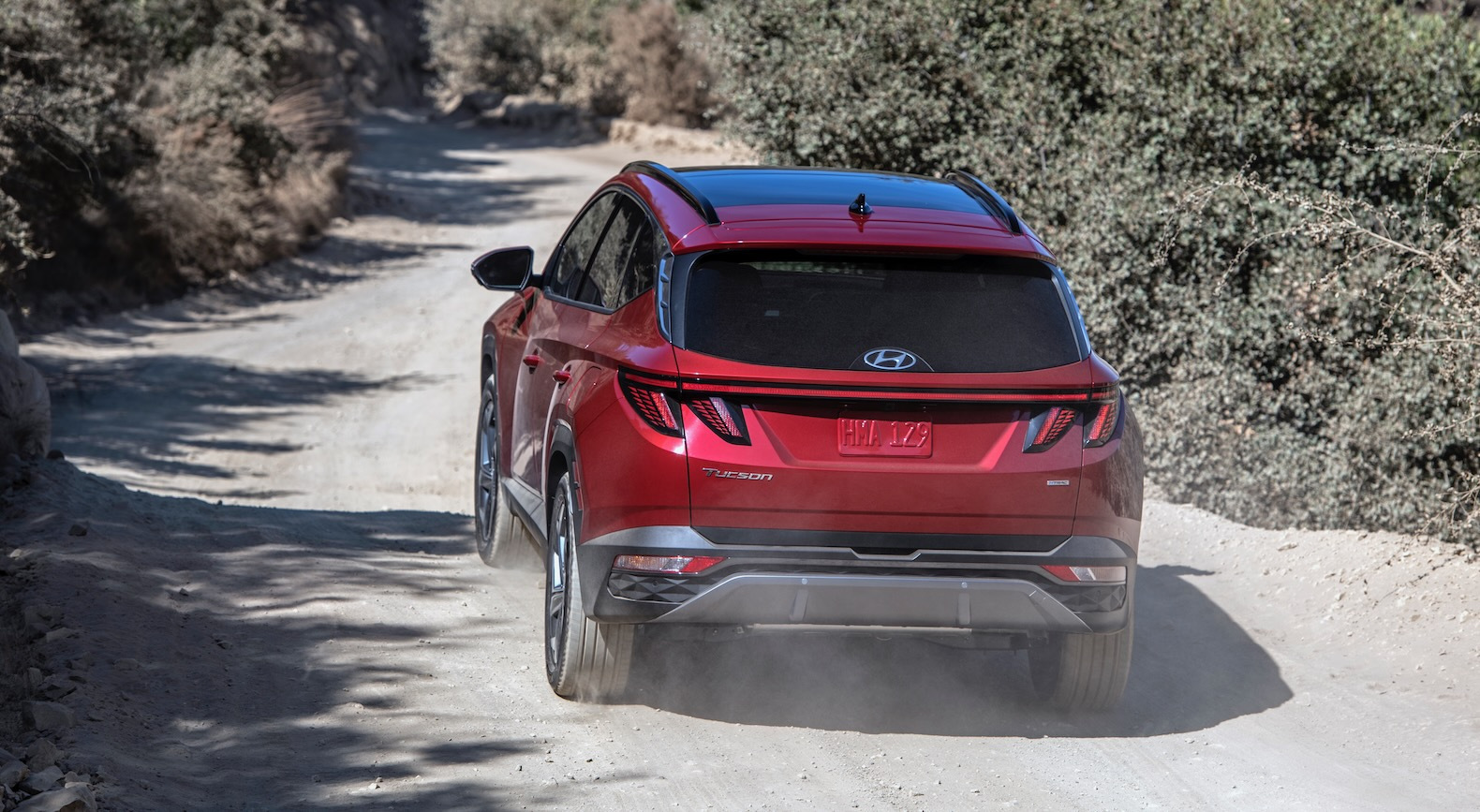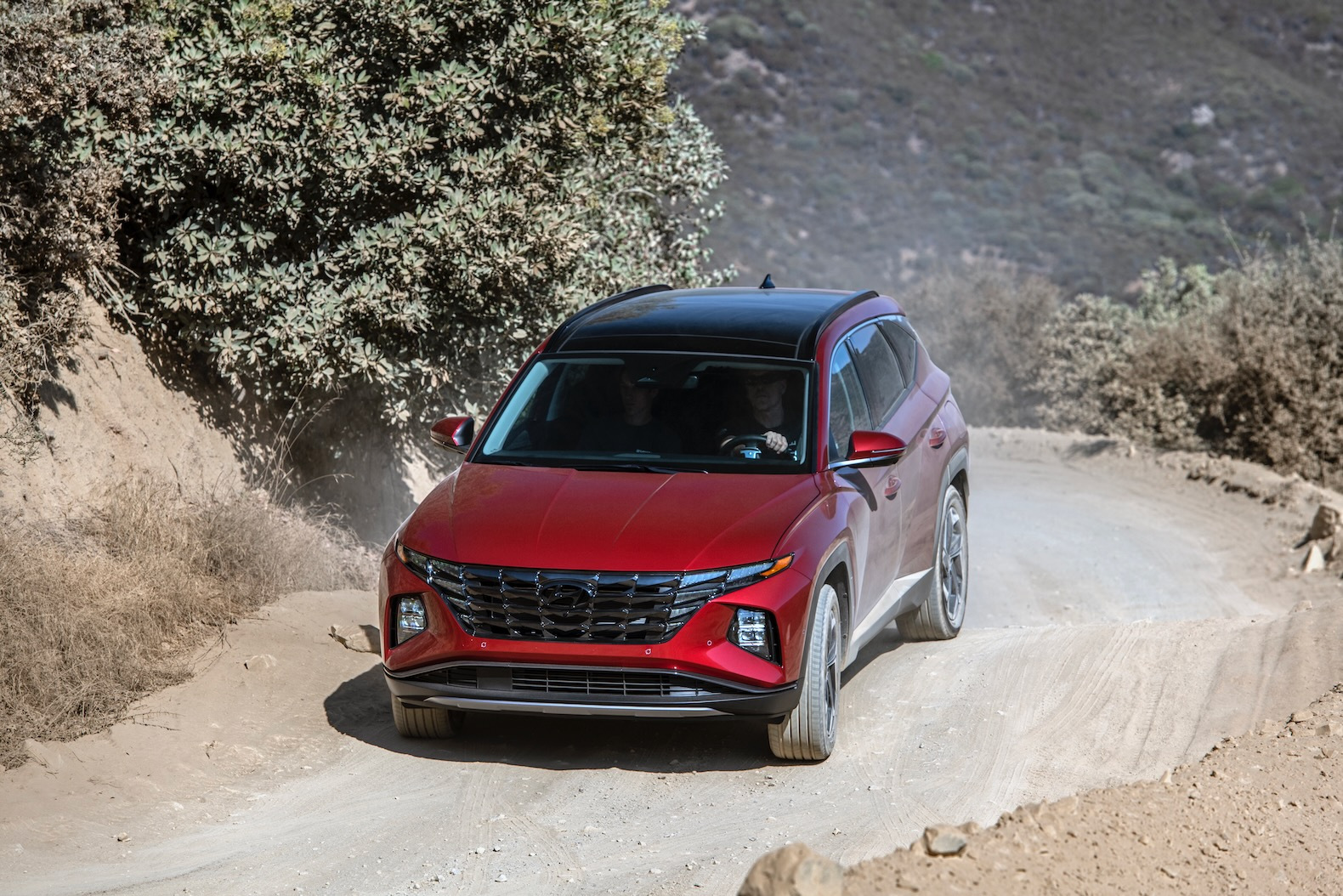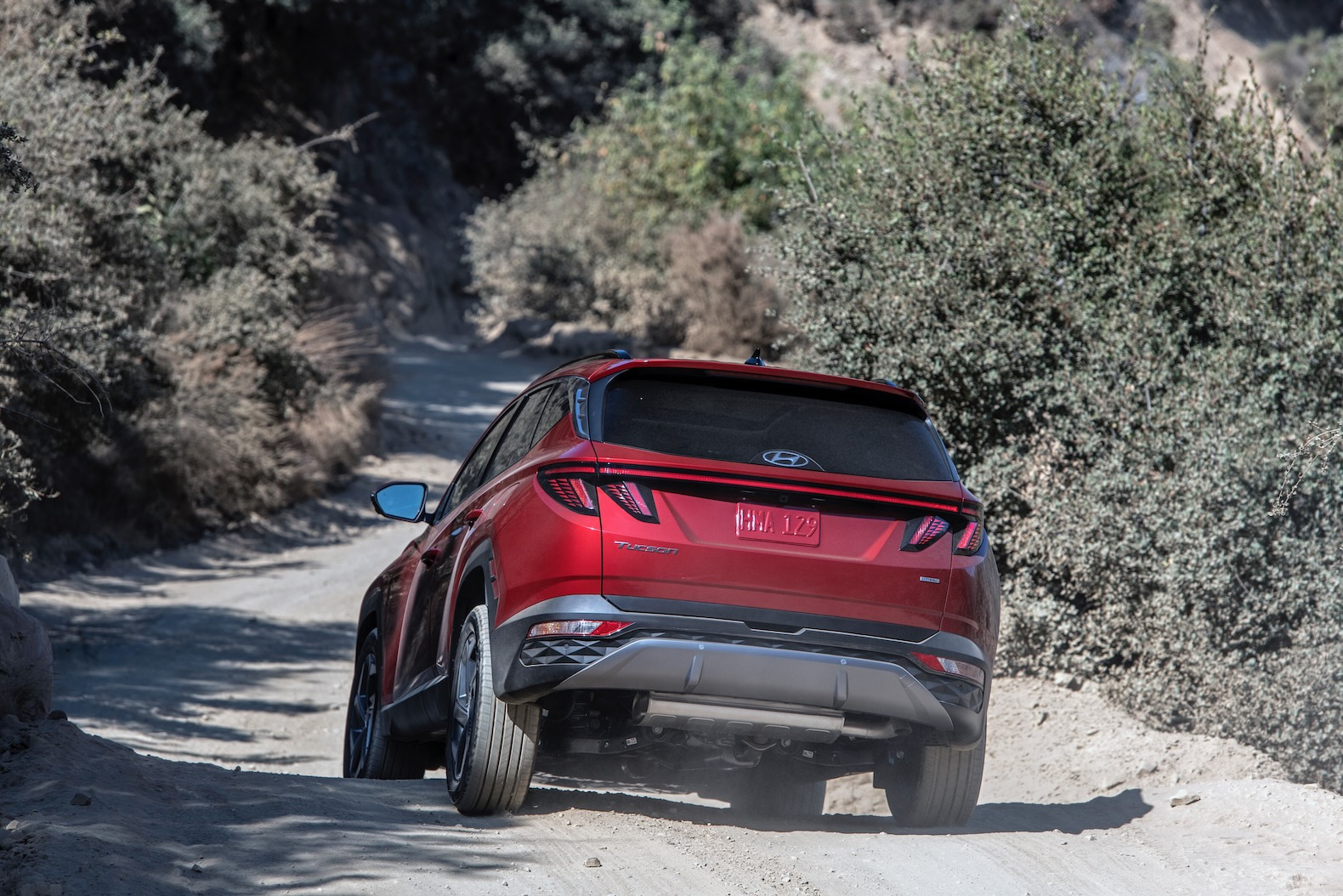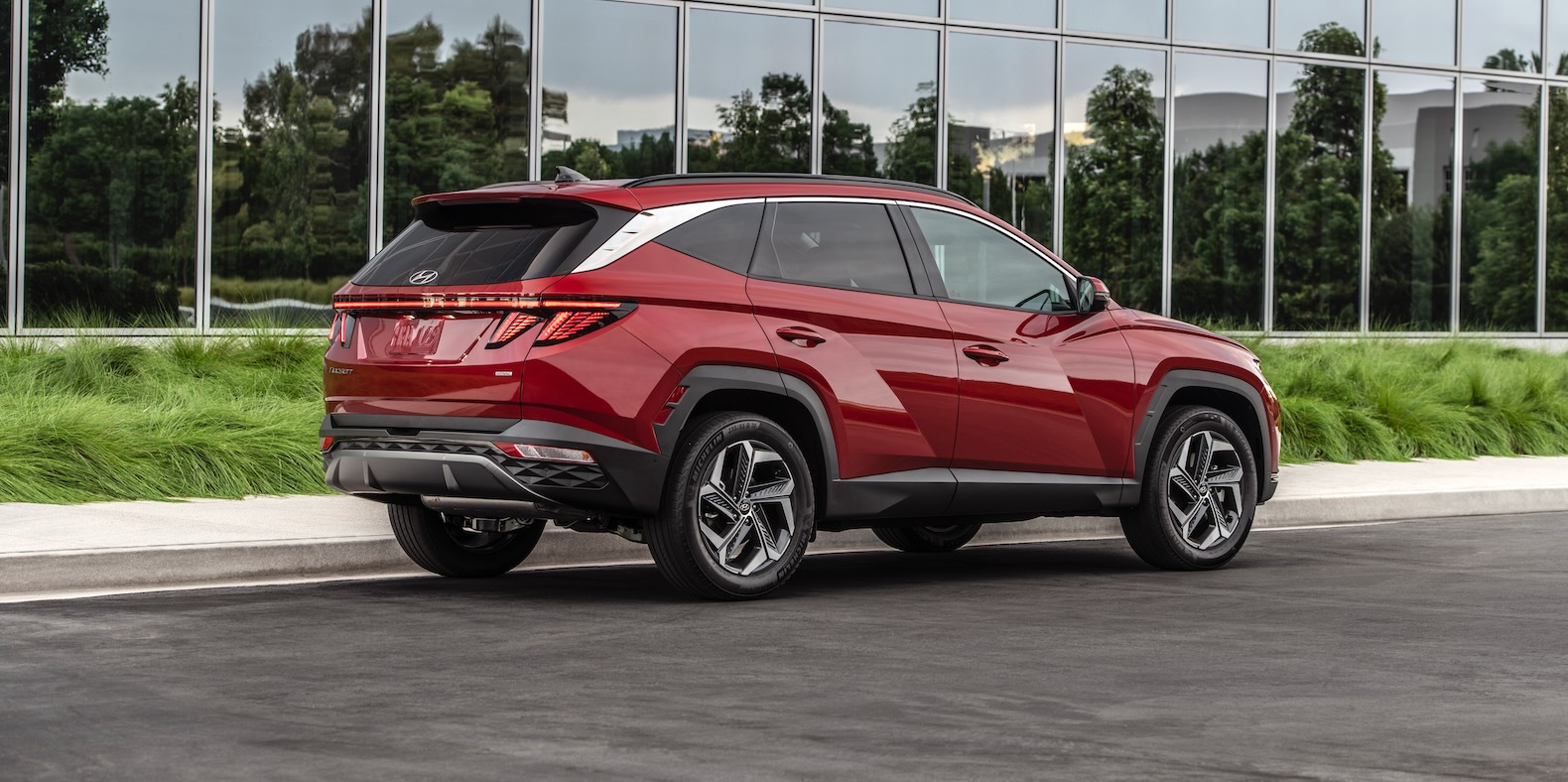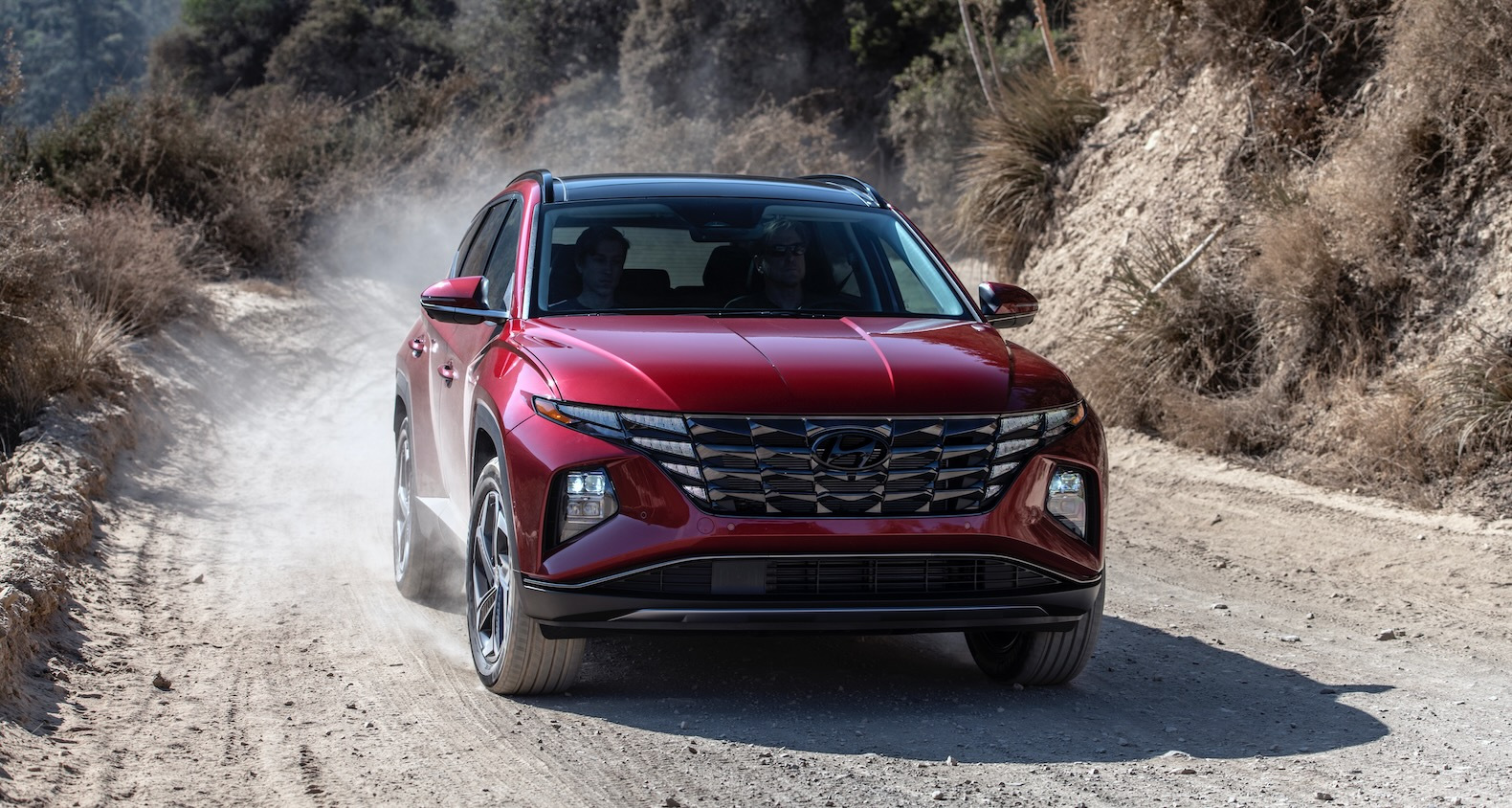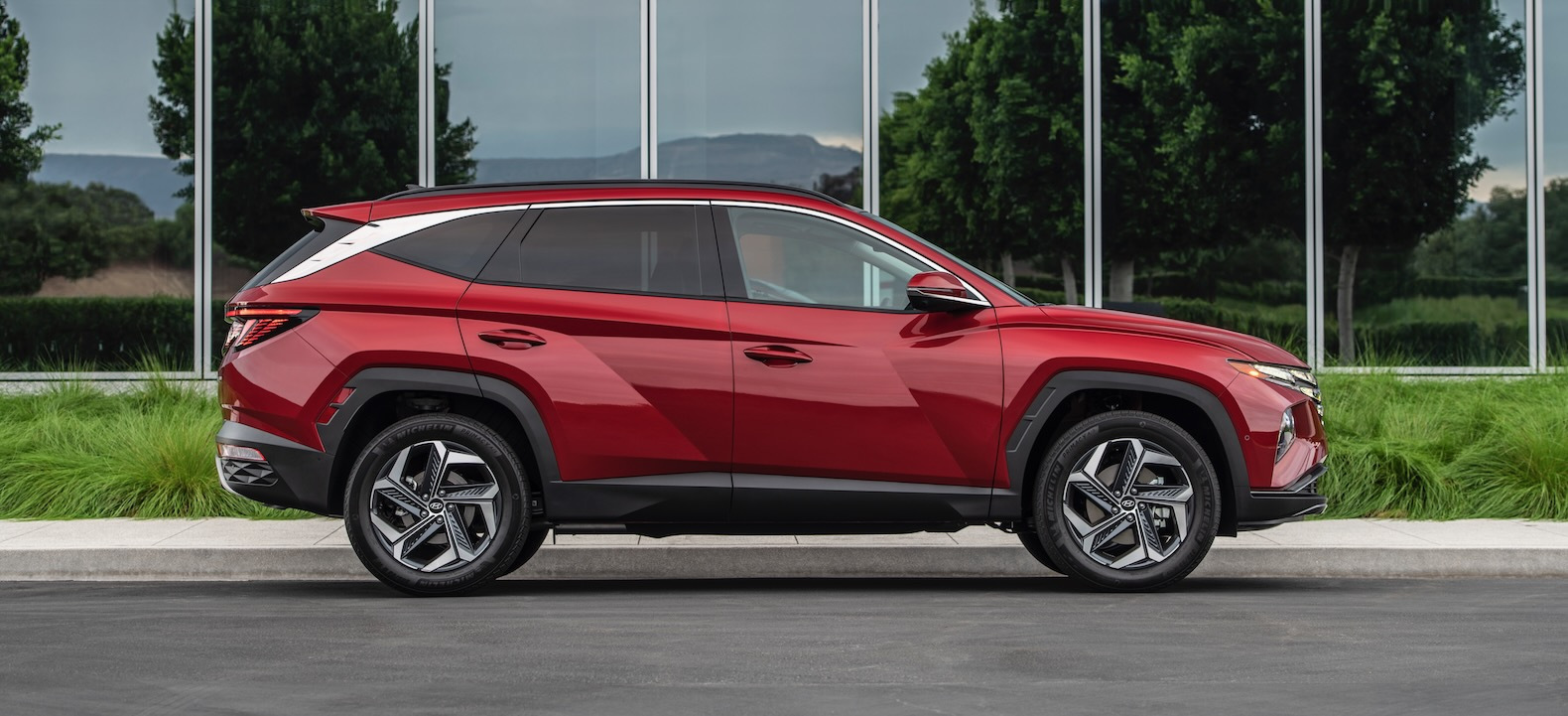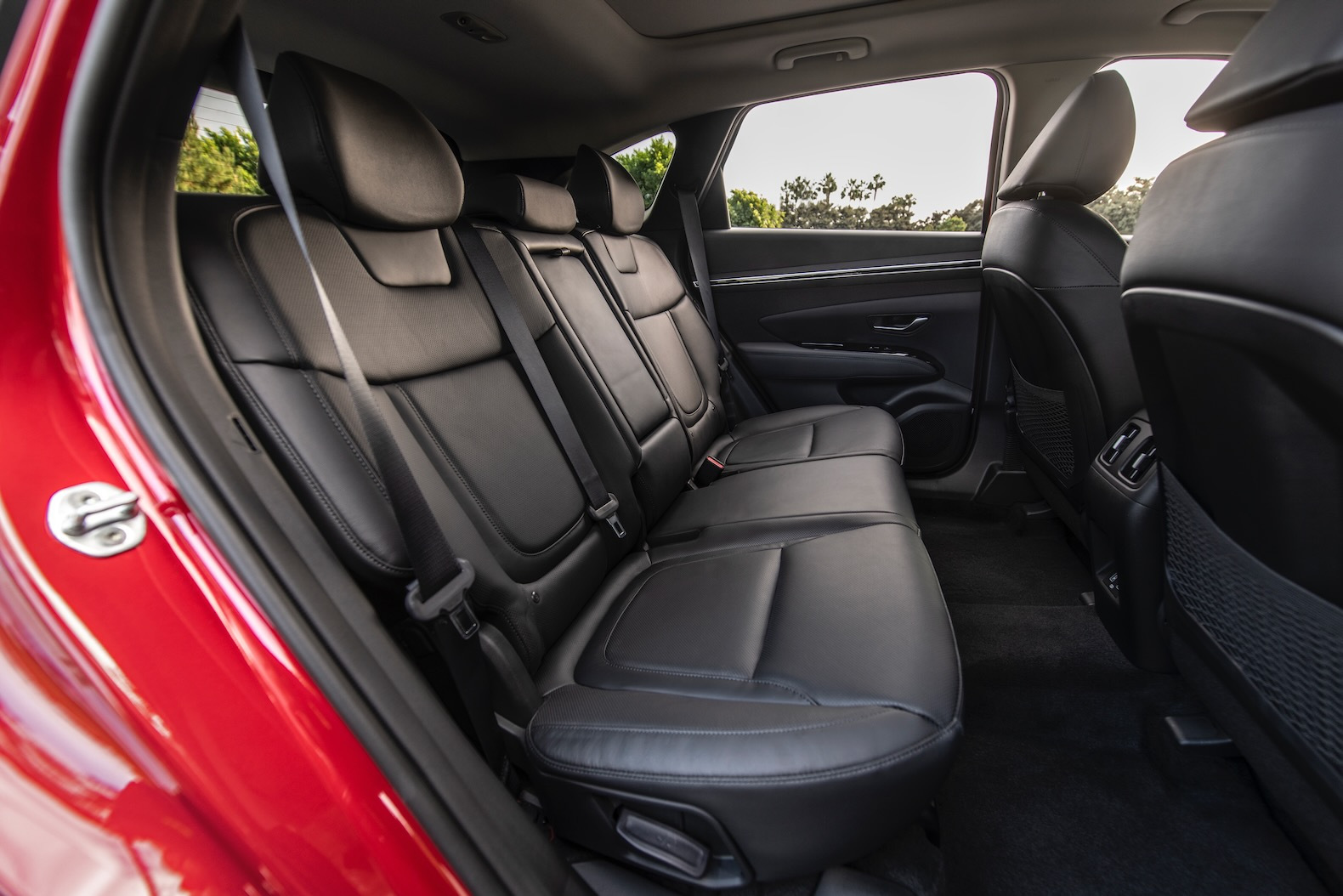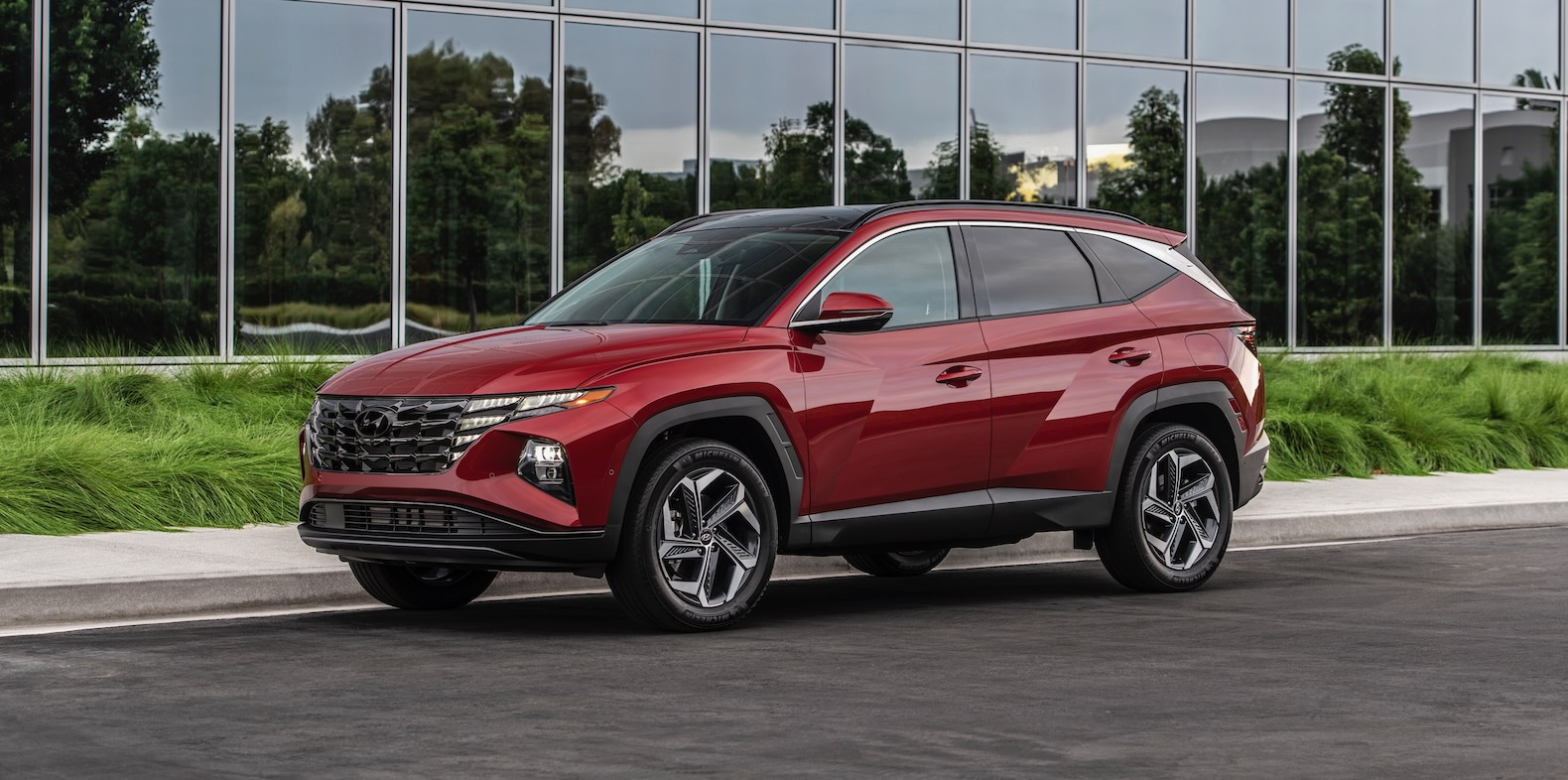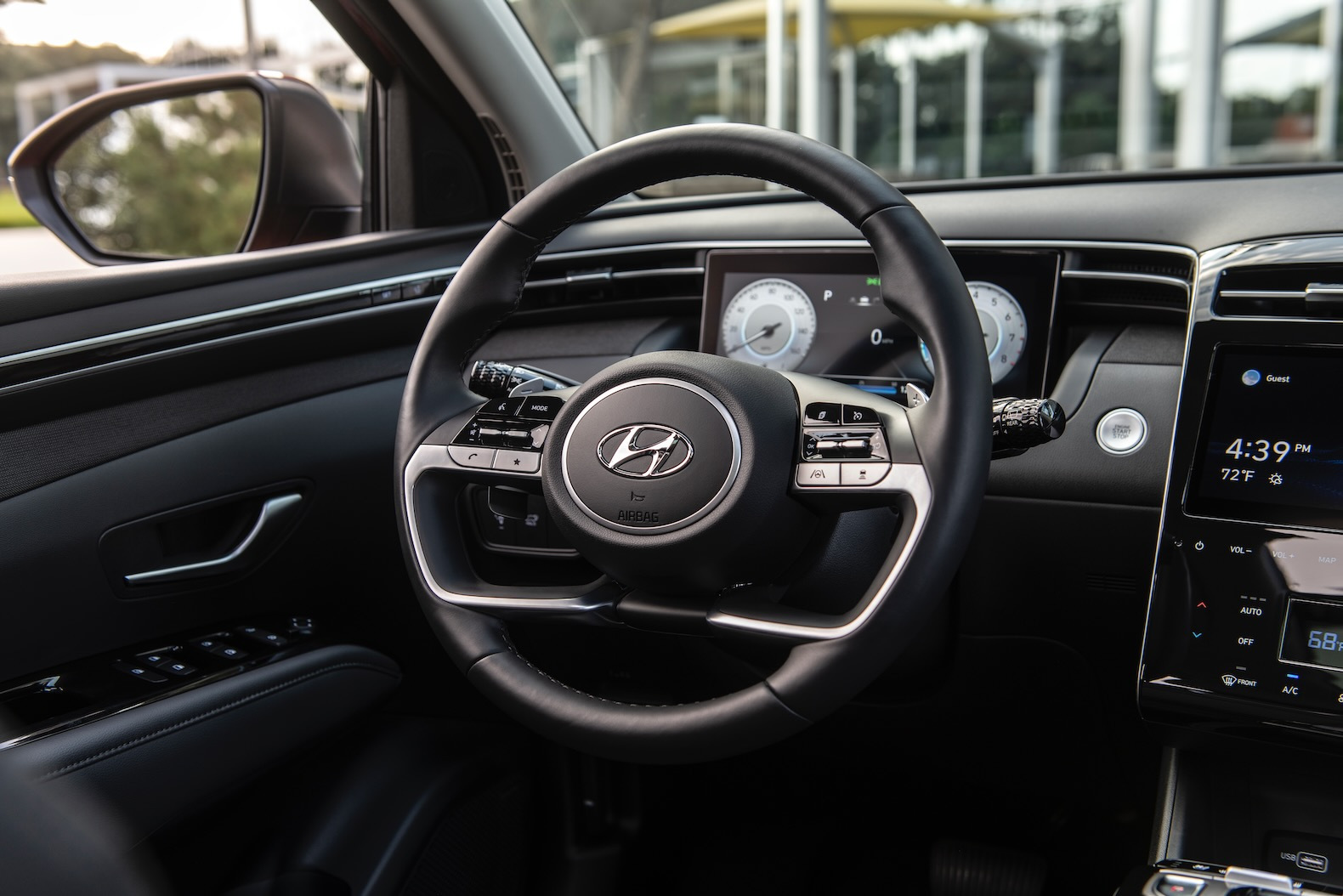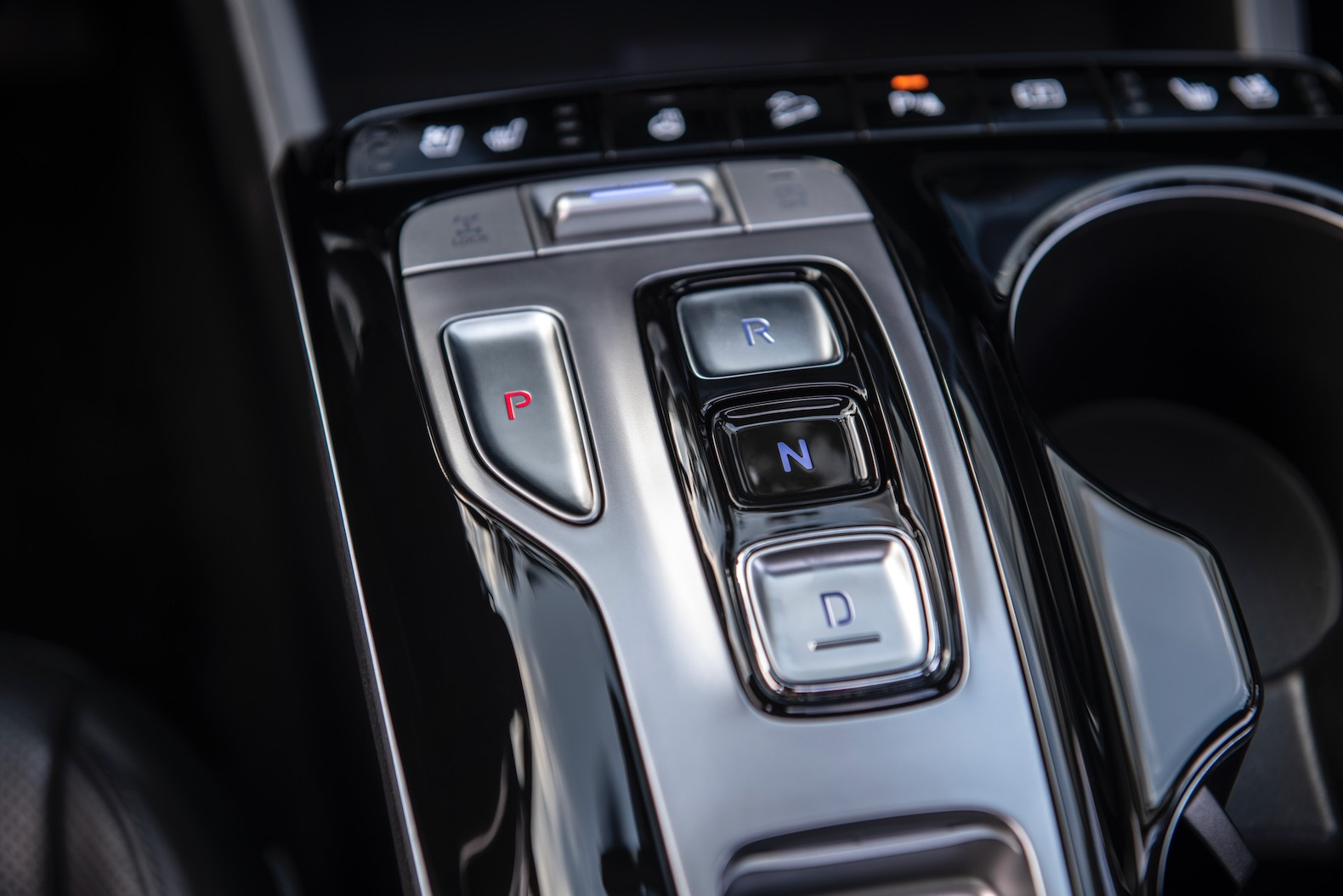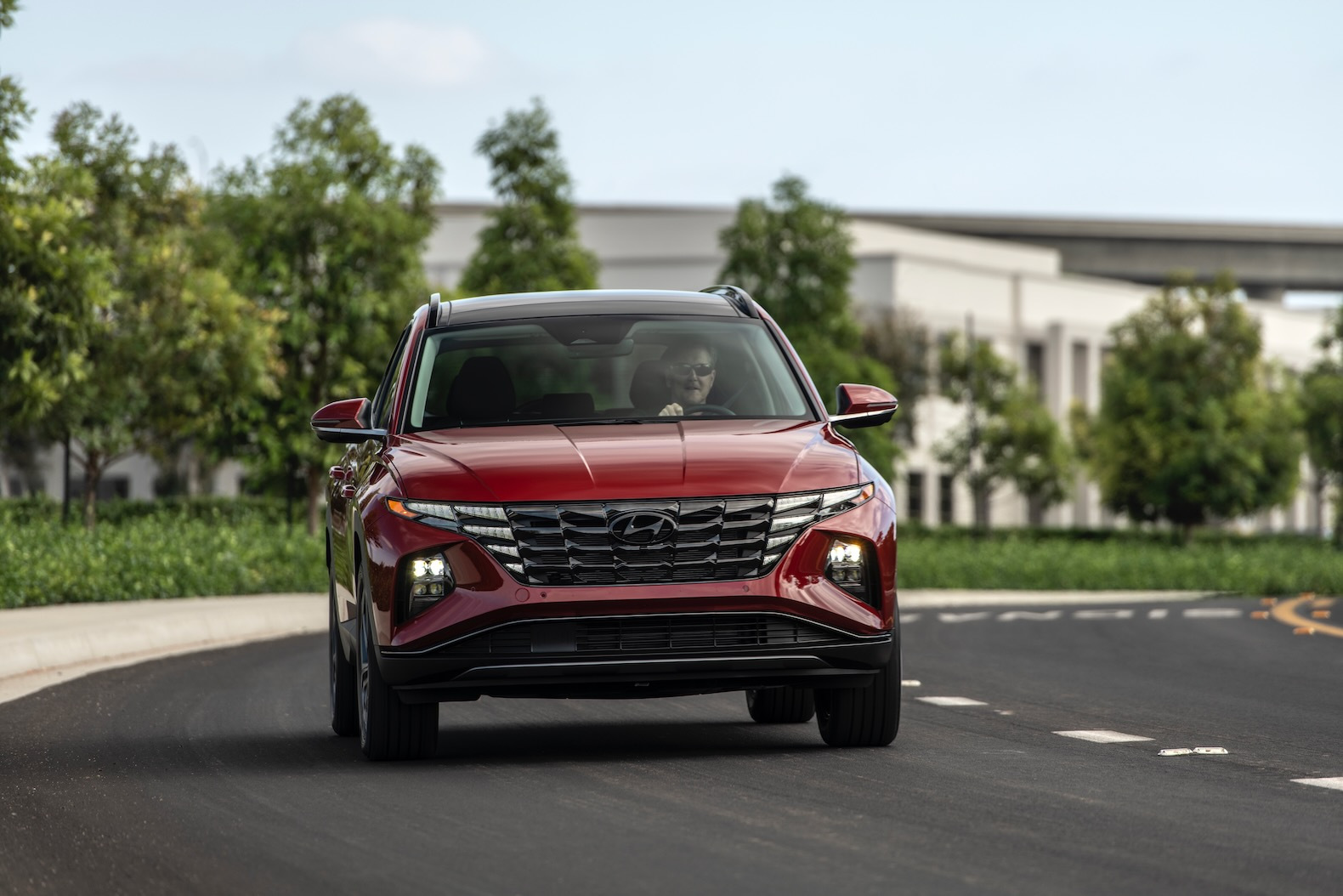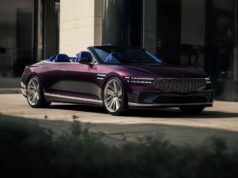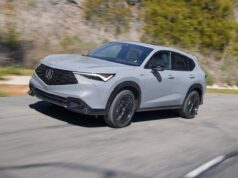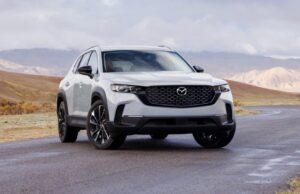The 2023 Hyundai Tucson leans into its extreme-sports exterior and hybrid drivetrains. The Tucson five-seat crossover SUV squares off against other compact bestsellers, including the Toyota RAV4, Honda CR-V, Nissan Rogue, and Ford Escape. The latest Tucson is a strong player due to leading technology offerings, a comfortable and roomy interior, and plentiful safety features.
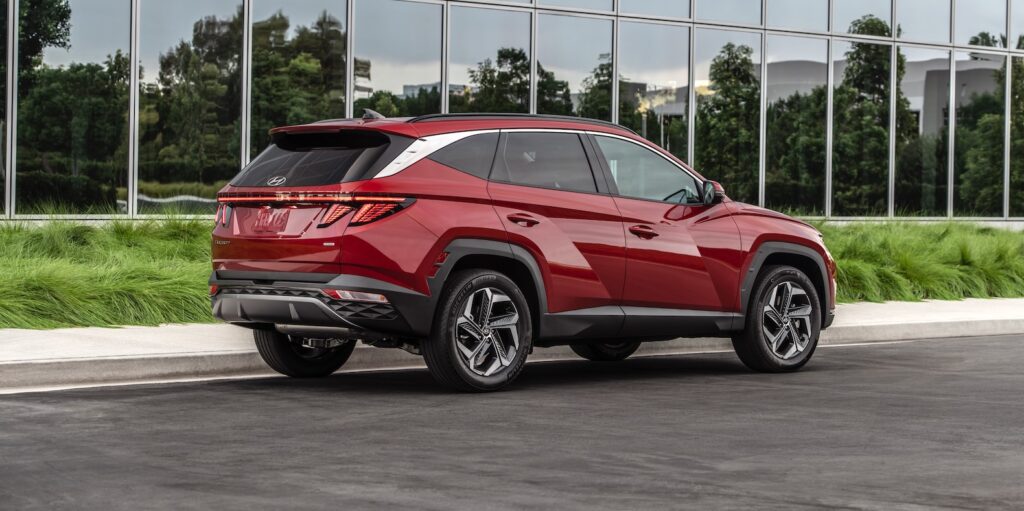
For 2023 the Tucson SEL no longer offers the Premium Package. Synthetic leather upholstery now covers the seats on the SEL (and SEL Hybrid) with the Convenience Package as well as the XRT. Finally, the 10.3-inch touchscreen now comes standard on the XRT, N Line, and Limited models—and on SEL Convenience and Limited Hybrids and Plug-In Hybrids.
Its angular body sets the Tucson on the path to stardom, but the interior snuffs out some of the glow. With deep angles stamped into its exterior, the Tucson takes some risks and reaps the rewards. It’s striking enough to earn two points for the exterior, though the drab interior doesn’t move the needle. Some clever visual tricks enliven its already crisp shape. The Tucson’s LED daytime running lights fair into its grille, melding in until they’re illuminated. Exhaust tips hide in the rear bumper, which has its own exuberant diamond-shaped details and downward pointing taillights.
The Tucson hybrid performs better, and it’s more efficient. Its most common 4-cylinder powertrain doesn’t have potent acceleration, but a well-tamed ride earns the Tucson extra points. Front-wheel drive can be upgraded to all-wheel drive on the gas-only Tucson, for $1,500. Tucson Hybrid and Plug-In Hybrid SUVs come with all-wheel drive.
The clear winners among the Tucson’s hybrid and non-hybrid powertrains are those with a jolt of electricity. A 187-hp 2.5-liter inline-4 shows up in base versions, with its 178 lb-ft of torque twisting through the front or all four wheels via an 8-speed automatic transmission. It’s hard to recommend this version once you’ve driven the superior hybrids: the gas-only model hesitates off the line and doesn’t have much grunt to muster when it’s time to pass.
Hybrids start with a 1.6-liter turbo-4 with 180 hp and 195 lb-ft of torque, but add on a hybrid pack with batteries and an electric motor for a net of 226 hp. The Hybrid splits that power to all four wheels through a 6-speed automatic, which shifts readily and doesn’t have the rubberband-like feel of a CVT in competitive hybrid SUVs.
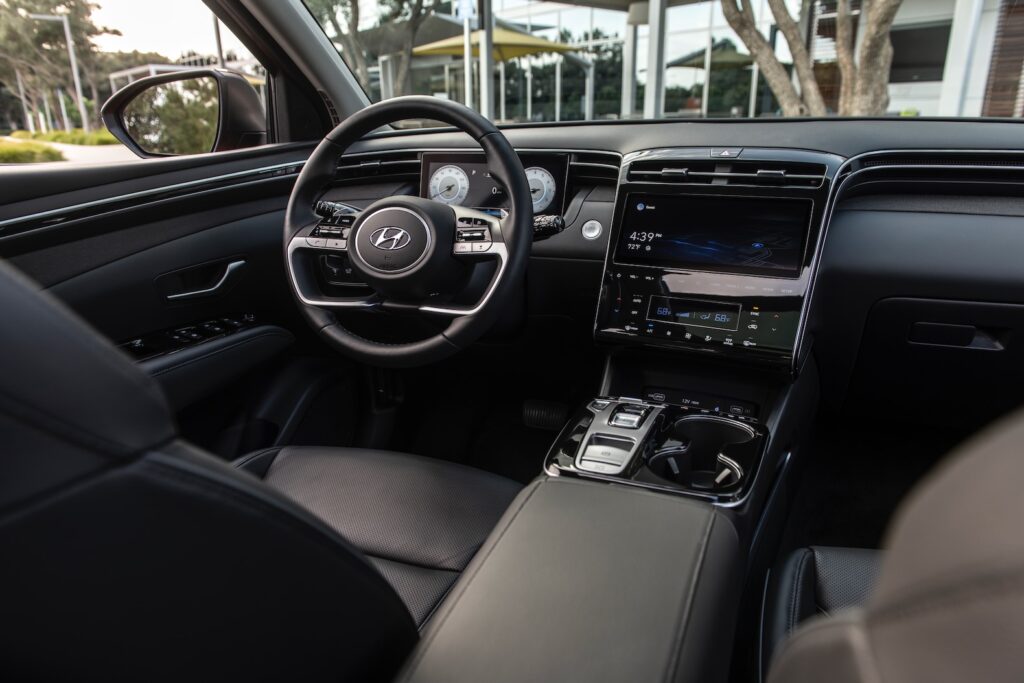
If its plug-in hybrid powertrain were more popular or more widely available, it’d garner another point for acceleration. Though it has a curb weight of 4,235 lb, and its suspension can heave more as it handles the extra weight, the plug-in hybrid has immediate thrust off the line (so long as the battery’s charged enough). Toggled into its Sport mode, the Plug-In Hybrid grows more focused in its steering feel and its transmission clicks off shifts more quickly, with the usual penalty in efficiency.
The Tucson’s ride and handling are benign, and even the Hybrids have good ride quality and light steering feel at mid-range and highway speeds. The suspension doesn’t cope as well with bumpy urban roads: it doesn’t gather itself back up quickly after a lumpy stretch, and it can skitter across pavement wrinkles while it scrabbles for traction.
Plug-in hybrids rule the Tucson rankings. It’s OK in gas-only form, which happens to be the most popular version. With the base engine, it’s pegged by the EPA at 26 mpg city, 33 mpg highway, 29 mpg combined with front-wheel drive, 24/29/26 mpg with all-wheel drive. Hybrids and plug-ins fare significantly better, with hybrids rated at 38/38/38 mpg in Blue trim and 37/36/37 mpg in SEL Convenience and Limited guise. Plug-ins get 31 miles of all-electric driving, 35 mpg combined, and an 80-MPGe rating overall.
The Tucson gets the IIHS nod, but the NHTSA is more critical. The IIHS gives it a Top Safety Pick+ award, but the NHTSA pegs it at four stars overall. Those scores offset each other, but with its standard automatic emergency braking, safety options, and good outward vision, the Tucson scores well on the tech safety front. Tucson’s also come with active lane control and rear occupant alerts. The Tucson SEL gains adaptive cruise control and blind-spot monitors; Limited models add rear automatic emergency braking, blind-spot cameras, front and rear parking sensors, and a surround-view camera system.
The cabin of the Tucson avoids all that drama. A gloss-black panel rises between the front seats and hosts the infotainment touchscreen (sized at either 8.0 inches or 10.3 inches). The monolith attracts fingerprints, and it’s surrounded by mid-grade materials. The strip of air vents, metallic trim, and smattering of controls does help liven up the cockpit, but it all works well enough, though Limited Tucson’s upgrade some controls to capacitive-touch controls.
The Tucson welcomes four people and their stuff with its substantial cargo hold and good front-seat comfort, the 2023 Tucson offers utility and quality. When it was redesigned last year, the Tucson picked up a wheelbase some 3.4 inches longer than the vehicle it replaced, pushing it to 108.5 inches. It also grew a half-foot, to 182.3 inches long overall. As a result it’s much closer to the Honda CR-V and Toyota RAV4 in its footprint.
The size gains show up inside, where the passenger space has much more room. In it, those in front will find supportive, cloth-covered, manually adjustable front seats in base trim; SELs and above can have synthetic leather upholstery and power driver-seat adjustments. The second-row seat now has 41.3 inches of leg room, bigger than Hyundai’s sedans. It’s not quite broad enough for three large people back there, but it’s close. The rear seatbacks recline for better comfort on long trips, and many versions can be fitted with a panoramic glass sunroof to let lots of light into the interior.
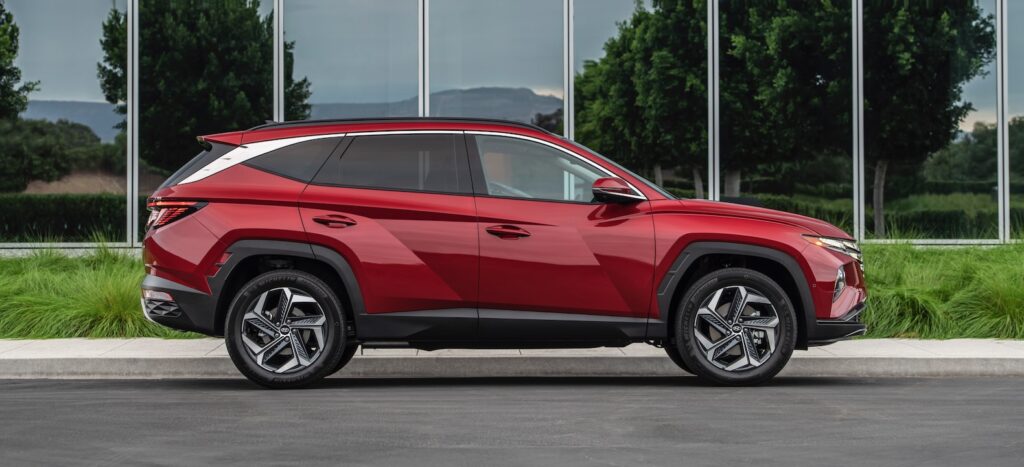
Behind those rear seatbacks, Hyundai’s carved out 38.7 cubic feet of storage space; it extracts 74.8 cubic feet when the rear seatbacks are folded down. Space is great, but the Tucson’s fit and finishes leave us underwhelmed on lower trim lines. The plasticky trim, like that on the related Elantra, have a lower-budget feel that doesn’t go away even with the bigger combination of digital displays. Upper trim levels don’t suffer from the same issue.
Impressive warranty coverage and standard equipment lift the Tucson against rivals. With excellent standard equipment, lots of options, great value, and a warranty that leads the pack, 5 years/60,000 miles, plus three free years of scheduled service, the Tucson is a great value. The Tucson SE costs $28,035 and comes with power features, cloth upholstery, and an 8.0-inch touchscreen with wired Android Auto and wireless Apple CarPlay. The Tucson SEL with the available Convenience package for $29,365 adds a power sunroof, synthetic leather upholstery, wireless smartphone charging, a 10.3-inch digital gauge cluster, and a power tailgate. Add the hybrid powertrain with its standard all-wheel drive, and the price rises to at least $35,445.
Among mid-range models, the XRT and N Line now also get the 10.3-inch touchscreen that’s standard on the top models; so do the SEL Convenience and Limited Hybrids and all Plug-In Hybrids. Keep in mind the bigger screen loses wireless CarPlay compatibility; you’ll have to plug in to get the smartphone interface. Tucson Limited SUVs get the 10.3-inch touchscreen, LED headlights, leather upholstery, heated front and rear seats, a surround-view camera system, and blind-spot camera, all for $38,795. Limited Plug-In Hybrids can cost more than $45,000.

